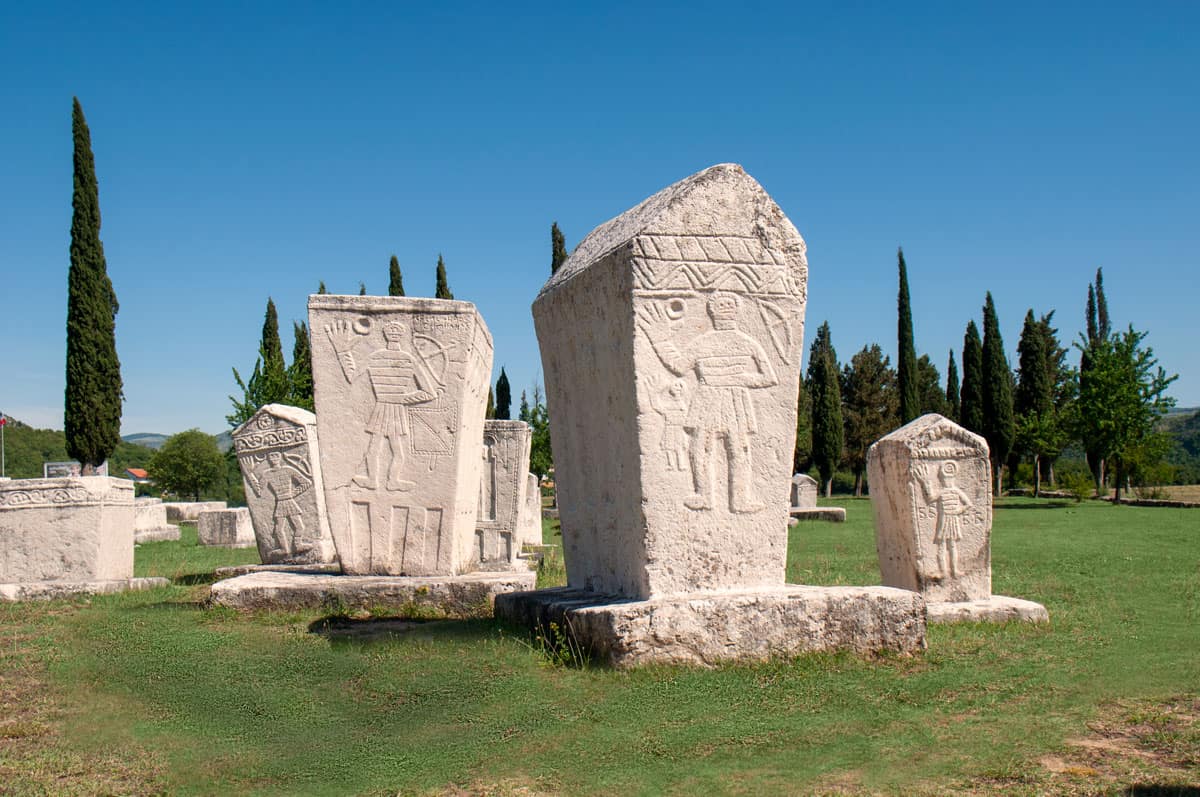
The stećci, i.e. standing stones, is the name given to a specific type of monolithic monuments used between the 13th and 16th centuries on the territories that in the 14th century would become part of the medieval Bosnian state. The area of Stolac is one of the richest in terms of the number and quality of standing stones, with 3 nearby necropolises (Radimlja, Boljuni, Potkuk) enjoying the status of UNESCO World Heritage sites.
Numerous folk stories are tied to the origin of the standing stones. One of the legends, after which they are called “Greek graves”, recounts that these areas were once inhabited by Greeks who were hit by a cold winter that lasted for seven years. As the Greeks could not endure the cold, their king ordered them to resettle to a different place. The only one who did not obey the king was the princess, who hid in a cave because she did not want to abandon her treasure, so her father cursed her and turned her into a dragon. Even today, she is taking care of her treasure in the cave, leaving it only during the summer to bathe in the sunshine on top of a mountain.
Among local people, there were many stories of the curative influence of the standing stones on the livestock. One of the recorded customs was to make animals walk around the stones several times to keep them healthy, strong and well fed. Another custom was to scrape dust of the stones, mix it with water and give it to barren women to help them conceive.
On a number of sites, local people would gather to pray in times of the danger up to the second half of the 20th century. On some sites, they would paint the most impressive stones, making it more distinguished and thus protective of the seeds and vegetation. The stone was often painted by a village girl who had lost her parents, who would then receive shoes and clothing from her fellow villagers.